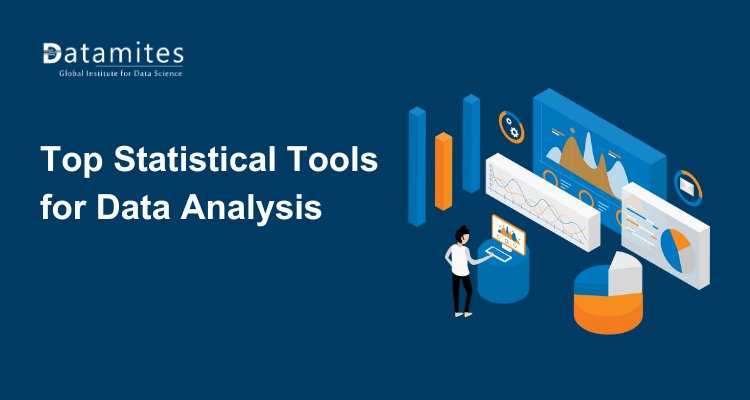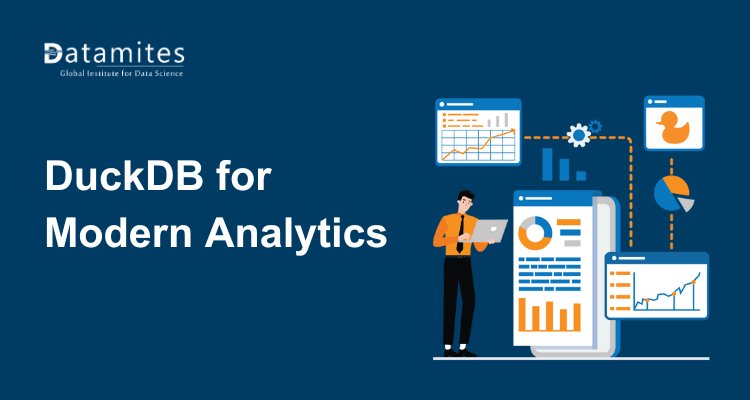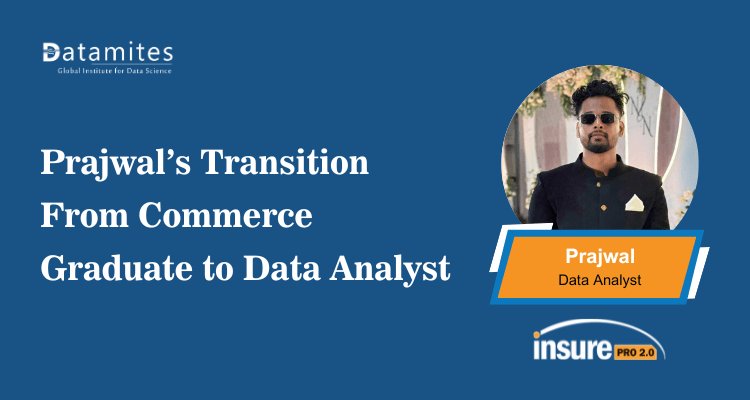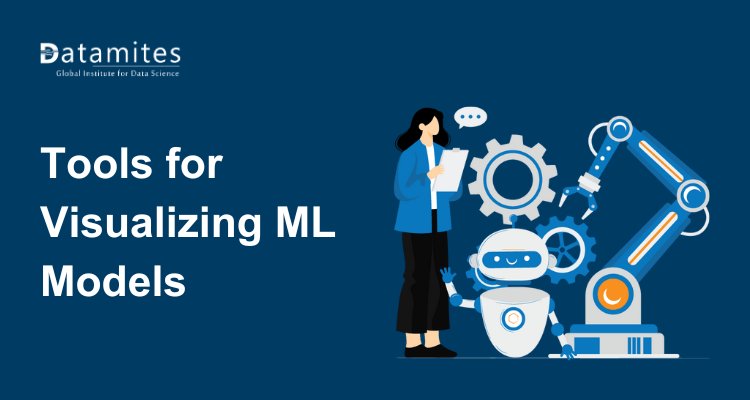Top statistical tools for data analysis
Discover the most powerful statistical tools used for effective data analysis across industries. This blog highlights top software and platforms that simplify data handling, visualization, and interpretation. Choose the right tool to boost your data-driven decision-making.

In today's data-driven world, statistical analysis plays a vital role in deriving meaningful insights from raw data. Whether you're a business analyst, researcher, or data scientist, choosing the right statistical tool is essential for accurate analysis and informed decision-making. Statistical analysis simplifies complex data into meaningful insights using advanced statistical analysis and techniques. This article highlights key statistical tools for data analysis and research across various domains.
The Statista reports that retailers that incorporate AI and machine learning analytics into their operations see a notable 5–6% increase in sales and profit growth compared to those that do not leverage these advanced technologies.
What Are Statistical Analysis Tools?
Statistical analysis tools are software applications used to collect, analyze, interpret, and present data. These tools help users apply statistical methods such as regression, hypothesis testing, ANOVA, correlation, and more to extract insights. In the context of data analysis tools, play a central role in discovering patterns, making predictions, and solving complex business and scientific problems.
These tools not only automate computations but also offer visualizations and modeling capabilities, significantly reducing manual efforts while improving accuracy and speed.
Refer to the articles below:
- Top skill for Data analyst: Python, Excel, SQL
- Essential Technical vs Non-Technical Skills for Data Analysts
- Top Industries Hiring Data Analysts in 2025
Top Statistical Tools for Data Analysis
R is a powerful tool for advanced statistical data analysis. The leading statistical tools used in data analysis, their unique features, and how to choose the right one for your projects.
1. R
R is an open-source programming language widely used for statistical computing and graphics. It offers extensive packages for statistical modeling, hypothesis testing, machine learning, and data visualization. R is especially popular among researchers and statisticians for graphical tools for analysis of its precision and flexibility. Although it has a steep learning curve, its powerful libraries like ggplot2, dplyr, and caret make it a top choice for deep statistical analysis.
2. Python
Python is a versatile language known for its simplicity and powerful data analysis libraries. With tools like NumPy, Pandas, SciPy, and Statsmodels, Python supports a wide range of statistical analysis in python and numerical methods. It’s ideal for analysts looking to integrate statistical analysis with machine learning, automation, or data engineering tasks. Python remains widely popular thanks to its versatility and strong community support.
3. SPSS (Statistical Package for the Social Sciences)
SPSS is extensively utilized in education, social sciences, and market research. Its intuitive GUI allows users to perform statistical tests without programming knowledge. It enables descriptive statistics, regression, ANOVA, and factor analysis. SPSS also allows automation through syntax and integration with Python and R for more advanced analytics.
4. SAS (Statistical Analysis System)
SAS is a robust enterprise-level software used for advanced analytics, multivariate analysis, business intelligence, and predictive modeling. It is especially popular in industries like healthcare, banking, and pharmaceuticals. SAS provides high-level capabilities through a programming interface as well as user-friendly visual workflows. It excels in handling massive datasets and performing complex analyses.
5. Stata
Stata is recognized for its speed and intuitive, user-friendly interface. It is widely used by economists, sociologists, and public health researchers. Stata is a comprehensive statistical software used for data analysis, trend analysis, advanced data manipulation, statistical modeling, time-series analysis, and creating detailed graphical visualizations. Users can work with both command-line and menu-driven options, making it flexible for both beginners and experts.
6. Minitab
Minitab is extensively utilized for Six Sigma and quality enhancement efforts. It offers comprehensive tools for hypothesis testing, regression, ANOVA, control charts, and measurement systems analysis. Minitab’s visualizations such as histograms, box plots, and scatterplots make it ideal for presenting findings. The interface is easy to navigate, making it accessible to both new and experienced users.
7. Excel
Excel is often the starting point for many in data analysis. Though it lacks advanced statistical modeling capabilities, it supports basic statistics such as mean, median, standard deviation, t-tests, and regression. With built-in charts and pivot tables, Excel remains a useful tool for trend analysis, small datasets, simple analysis, and quick reporting.
8. MATLAB
MATLAB is a powerful platform and language for numerical analysis and visualization. It is widely used in engineering, physics, and computational finance. MATLAB allows users to write custom code for statistical models, signal processing, and image analysis. Its toolboxes support advanced statistical and machine learning techniques.
9. JMP
JMP, developed by SAS, is designed for interactive data exploration. It offers advanced statistical capabilities alongside rich visualizations, making it a powerful tool for engineers and scientists. JMP simplifies complex statistical modeling with intuitive workflows, making it ideal for exploratory data analysis.
10. Tableau
Tableau is a leading data visualization tool that complements statistical analysis by enabling intuitive, interactive dashboards. While not a full-fledged statistical tool, Tableau can visualize trends, correlations, and forecasts from analyzed data. It integrates well with R, Python, and Excel for extended capabilities.
For beginners or business users, tools like Excel, SPSS, or Minitab are recommended. For more advanced and flexible analytics, Python and R are ideal. Enterprise use cases may prefer SAS or JMP due to their scalability and robust support. According to the US Bureau of Labor Statistics, employment for market research analysts is projected to grow 8% from 2023 to 2033.
Statistical tools improve data analysis accuracy, efficiency, and scalable outcomes. Whether you're performing academic research or business intelligence, the key lies in matching the right Tools for Data Analysis goals and technical capabilities.
Refer to the articles:
- How much will be the Data Analytics Course Fees in Mumbai
- Why DataMites for Data Analytics Course in Mumbai
- Why DataMites for Data Analytics Course in Delhi
Enrolling in Data Analyst course in Bangalore or other major tech hubs like Kochi, Coimbatore, Hyderabad, Pune, Kolkata, Chennai, Ahmedabad, Delhi, Jaipur, and Mumbai offers aspiring professionals the opportunity to gain practical industry exposure, build strong peer connections, and accelerate their career growth.
DataMites Institute stands out as a leading name in tech education, providing comprehensive programs in Data Analytics, Data Science, Artificial Intelligence, Machine Learning, Python, IoT, and Data Engineering. Its industry-relevant curriculum features real-time projects, certified internships, placement support, and globally recognized certifications accredited by IABAC and NASSCOM FutureSkills.
With a strong footprint across India—including Data Analyst training in Ahmedabad, Chennai, Kochi, Coimbatore, Hyderabad, Pune, Mumbai, Delhi, Jaipur, Bangalore, and Kolkata—DataMites offers both online and offline learning modes, equipping professionals with the future-ready skills needed to thrive in today’s dynamic job market.





